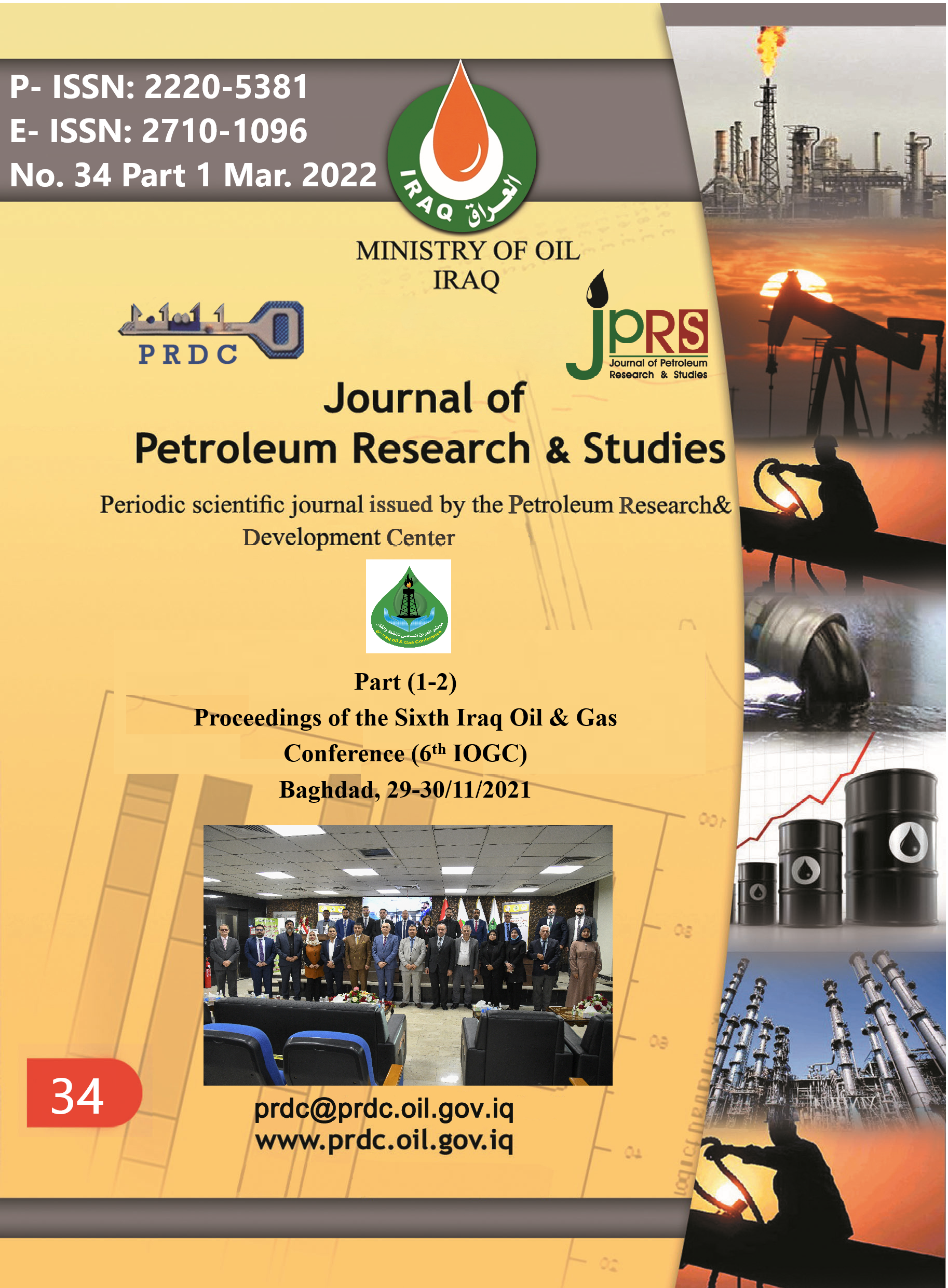Appraisal Well Design in "X" Oil Field
DOI:
https://doi.org/10.52716/jprs.v12i1.589Keywords:
Casing, Setting Depth, Design, CostAbstract
The selection of casing depths and casing design are considered one of the most critical steps in the well construction process. Inaccurate selection of casing setting depths and casing design can result in many challenges, long time and hence high well costs.
"X" oil field was taken as a case study. There is only the exploration well X-1 drilled up to date. The 20˝ surface casing was relatively long because it was set at the top of Dammam Formation. That means deep surface hole, long trip time, large amount of mud, long surface casing, large amount of cement and hence high cost. Also, Hartha Formation was not evaluated because it is isolated with the 13 3/8" & 9 5/8" casing and the perforation through two casing was not available. Another problem, the 9 5/8˝ production casing damaged at the depth 32 m due to failure of tolerating the axial forces before or after the cement job.
All data was inputted into the Landmark software to simulate the well. It was found that the surface casing can be set at the top of Lower Faris Formation instead of Dammam Formation. Also, The Hartha Formation can be drilled in the 12 ¼ ˝ hole and isolated by 9 5/8˝ casing instead of drilling it in the 17 ½ ˝ hole and isolating it by the 13 3/8˝ casing. It was also found that the 9 5/8˝ production casing can withstand all loads by selecting casing with higher weight.
The cost of the modified design was also checked to study the feasibility of the modified design. It was concluded that the modified design can save around 300,000 USD for each well comparing with the design of well X-1.
It is recommended to apply this design on the appraisal well to be drilled. If the design shows no problems, it can be considered the optimum design of appraisal and development wells to be drilled in the future. Also, the slim-hole design can be studied and an economic feasibility comparison can be made with the current and the proposed design in this study.
References
A. Bourgoyne, M. Chenevert, & K. Millheim, “Applied Drilling Engineering”, Vol. 2, SPE Textbook Series: Society of Petroleum Engineers, 1986.
S. Rahman and G. Chilingarian, “Casing design theory and practice”. Amsterdam, Netherlands: Elsevier Science B.V. p. 121-131, 1995.
G. Byrom,”Casing and liners for drilling and completion design and application”. 2nd ed. Waltham, Oxford: Gulf Professional Publishing. 2015.
Rabia, H., “Well Engineering & Construction”. Entrac Consulting Limited, London. 2001.
Rabia, H. "Fundamentals of casing design." London: Graham & Trotman Limited, 1987.
Missan Oil Company (MOC), “Final Evaluation Report of Da-1 Well”, 2018.
Downloads
Published
How to Cite
Issue
Section
License
Copyright (c) 2022 Sinan I. Mohammed, Hayder A. Sraud, Ali G. Radhi, Samer W. Azeez

This work is licensed under a Creative Commons Attribution 4.0 International License.














